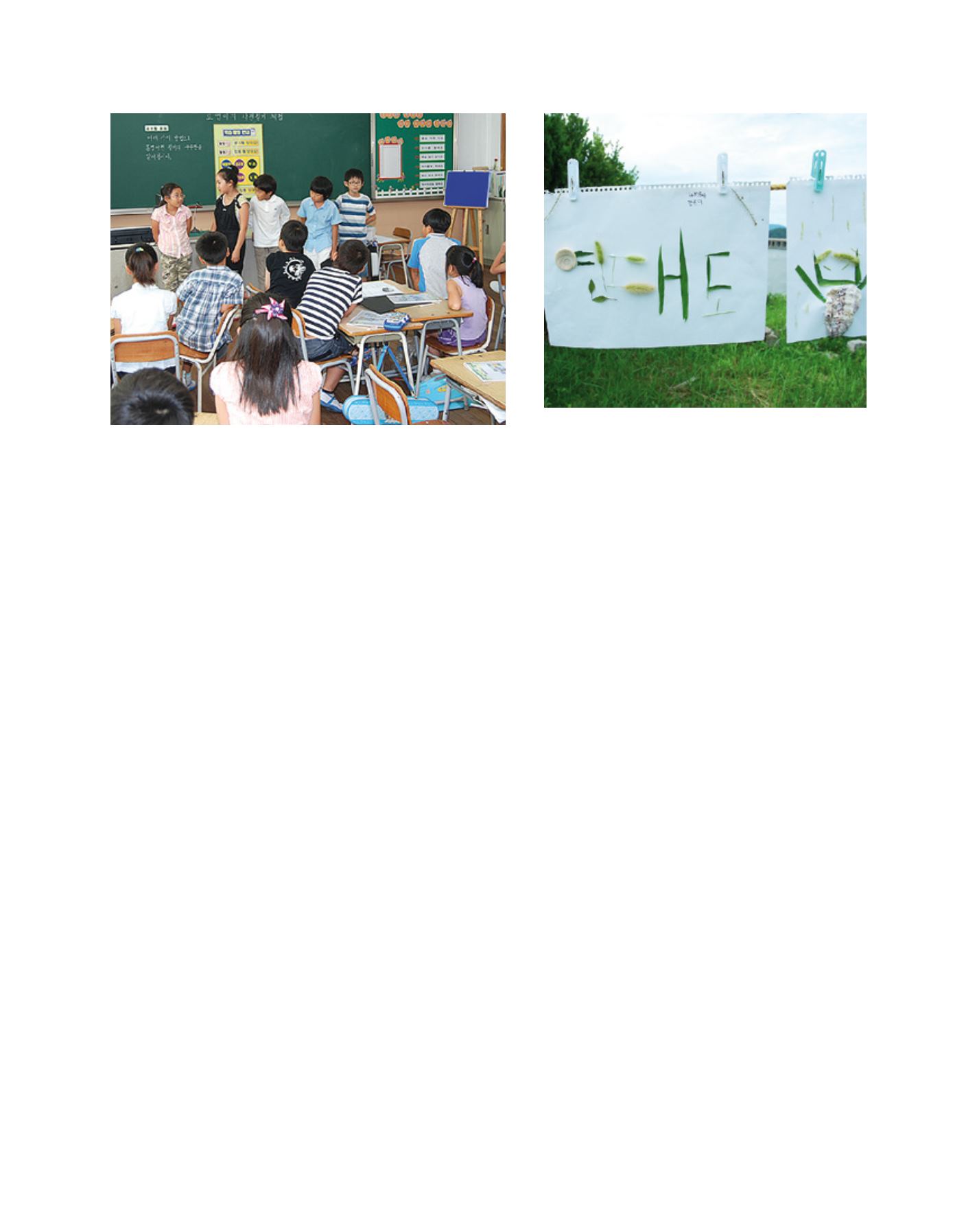

[
] 51
local communities, in collaboration with 35 local educa-
tional NGOs. The efforts have led not only to sharing of
the key principles, practices and values that are required
for the city’s sustainability among the local people, but also
to bringing critical shifts in many aspects of educational
programmes organized by those NGOs.
The main reasons for Tongyeong’s outstanding
success among many other RCEs worldwide include
enduring financial and administrative backing from
local authorities. People’s active participation and
subsequent feedback are also integral parts of the story.
Encouraged by political and grassroots support, the
RCE continues to plan the expansion of its ESD prac-
tises at all levels, from kindergarten to college, until
2012. While spreading and elaborating on educational
projects, the city is preparing an ambitious scheme
for the establishment of the Education for Sustainable
Development Foundation and the RCE Eco-Park and
Centre in an attempt to ensure the sustainability of the
RCE itself. The Tongyeong case suggests that the wide-
spread application of its best practices in broader parts
of the country could eventually change our notions of
cities, encompassing urban and rural areas. A city can
be transformed by spurring education for a sustainable
future into people’s daily lives.
Our tomorrow will be different if educational endeav-
ors like Tongyeong can be brought into the mainstream,
contributing to achieving sustainable green growth in
Korea and beyond. The beginning of change in this
small city was made possible thanks to the proclama-
tion of the UN Decade. However, history shows that
even a little personal or social change is much more
powerful than a big, swaggering political slogan. The
DESD still has a long way to go if it is to achieve its aims
and produce a strong case for ESD in the real world,
not just in theory. In the end, the hope is that ESD will
prove itself a sustainable form of future education and
learning for the people of the whole world.
global issues at a distance, the online networks weaving individuals
and societal trends can be organized as transformative agents for every
economic and social activity.
The Korean National Commission for UNESCO began to hold the
ESD Colloquium Series in a bid to tackle those impediments. The
unifying theme for the 2010 Series is ‘How shall Korea utilize ESD?’
Each event, co-organized by the Commission and its partner institu-
tions, intends to stretch the benefits and potential of ESD beyond the
‘inner circle’. Thematic areas associated with the series include green
technology, creative learning, local development, social integration
and educational innovation. The series is designed to foster conditions
for identifying and expanding the alliances for ESD in Korea, so that
the ESD constituency reaches out to diverse stakeholders, including
government, civil society, the private sector and academia.
More often than not, the Korean success story of realizing the princi-
ples and values ESD has to offer focuses on Tongyeong, a harbour city
located in the southernmost part of the Korean peninsula. Tongyeong
is a costal region of 138,000 people in an area of 240 square kilo-
metres. Marine resources and cultural heritage are the focus of its
economic activities, based on fisheries and eco-tourism. Providing
all citizens with a quality education in support of generational equity
and global justice has been deemed an imperative for prosperity and
for the very existence of local society. Since being designated as a
Regional Centre of Expertise (RCE) by United Nations University in
2005, the island has vividly illustrated how ESD can lead to dramatic
changes in local education and people’s lives.
An ESD model elementary school, Inpyoung, has integrated ESD
into its curriculum and extracurricular activities through a whole-
school approach. At first, teachers there had difficulty understanding
the concept of ESD and finding where and how to start the teaching-
learning process. After participating in workshops and forums offered
by the RCE, however, they developed their own ESD syllabus by
studying the local environmental, social and economic issues. Parents
are also given chances to participate in school activities, such as the
exhibition entitled ‘Future of Our Town,’ which saw parents, teachers
and students all working together. In order to expand ESD within and
outside of the limited numbers of model schools, the RCE has oper-
ated ESD programmes and activities that have a significant impact on
Students at Inpyoung Elementary School performing a role play in an ESD project class
Tongyeong RCE saw participants in an ESD Camp produce an
artwork made out of wetland plants
Image: Inpyoung Elementary School
Image: Tongyeong RCE
















